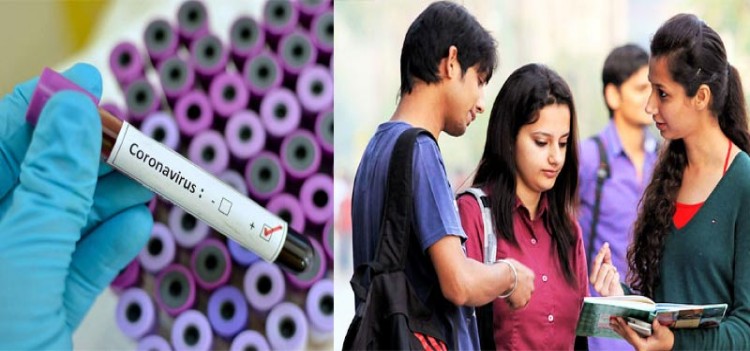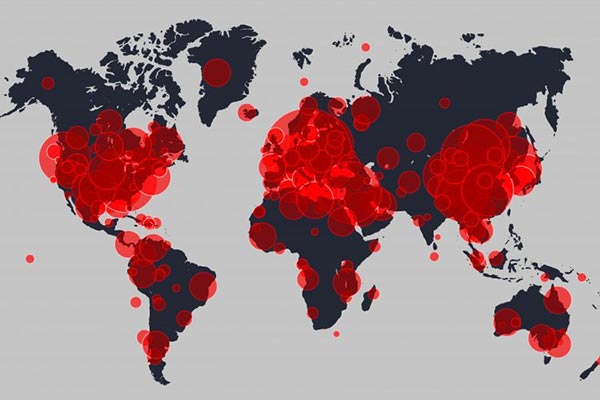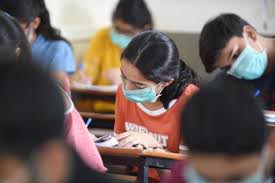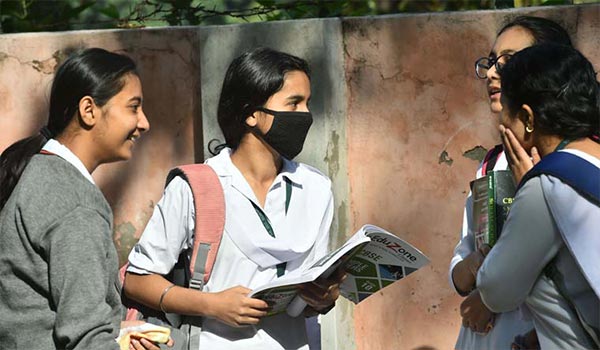Apply now for Admission



The “domino effect” of the novel coronavirus, COVID-19, can be felt in educational institutions throughout the world. Teachers and students in educational institutions throughout the globe have been in a dilemma since schools, colleges, and Universities have been forced to shut down after threats of the exponential increase in COVID-19 cases.
The coronavirus COVID-19 outbreak in Wuhan, China that occurred on 31 st December 2019 has spread to more than 200 other countries around the world. The WHO had lately declared the outbreak as a major “pandemic” of global concern as it has infected more than 7,23,500 people globally and resulted in the death of more than 32,500 people. At present, the total number of reported cases in India stands at 1050 with 30 COVID-19 related deaths.
Currently, the principle of “social distancing” is being followed worldwide to prevent excessive crowding of individuals to curb the spread of COVID-19, an effort to help in minimization of the transmission of the disease.

Nationwide schools have been asked to close to prevent further spread of the virus among students. Since schools are the areas of maximum crowding and interaction, this move ensures containment and less spread of the coronavirus among vulnerable school students. It started with immediate suspension of classes for kindergarten students and gradually proceeded to higher classes until 12th standard. Internal final year examinations and board examinations (for students of Std. X and XII) have also been put on hold until further notice. Outside extra-curricular activities, picnics, field trips, and club activities have been cancelled until there is evidence of controlled spread of the COVID-19.
This is bound to create disruption in academics and education with negative effects on learning, understanding, and knowledge. However, with the advances in technology, efforts to maintain continuity in education is carried out through online and distance-learning education and exercises. In addition, precautionary SOPs and strategic plans are being created in case such an unanticipated event occurs again in the future.
Efforts are being made to ensure that young students don’t face the impact of this global pandemic. Under the Right to Education Act, children in classes up to Class VIII are given direct promotion to the next class.

Colleges - both national and international, have been asked to close to prevent the spread of the virus among students. Since colleges are areas of maximum socializing, gathering, and interaction, this move ensures containment of COVID-19 among vulnerable college students. Daily classes and internal final year examinations have been put on hold until any sign of decrease of the contagion. Inter collegiate festivals, extra-curricular activities, field trips, industrial visits, and club activities have been cancelled due to the increasing spread of the coronavirus.
For students who live in on-campus hostels and PG accommodations, the current situation has become more like a living nightmare as they have been instructed to leave their current accommodation and return to their homes. With the increase in restrictions in transport and travelling, this has become a major obstacle for these students.
This sudden pandemic has also created disruption and interruptions in academics and teaching. However, with the advances in technology, efforts to maintain continuity in education is carried out through online and distance-learning education.
All institution-level and public examinations have been put on hold until further notice because of the looming threat of COVID-19. All previously scheduled examination timetables have been discarded until new examination dates are announced. Examination rooms increase the chances of social interaction and result in spread of the highly infectious coronavirus disease.
The nationwide lockdown has also impacted the registration and examination dates of entrance examinations like NEET and GATE that are required for admission into various professional academic courses.
This is sure to affect the academic year-end vacations and subsequent re-opening of schools and colleges for the next academic year.

With the suspension of institution-level and public examinations, examination paper evaluations have also been suspended until further notice.
This helps to ensure that social distancing is maintained to ensure that the highly infectious disease does not spread among evaluators and examiners while they gather together and interact with each other during the paper-correction process.
The lockdown has had an impact on the registration and examination dates of national entrance examinations like NEET, GATE, JEE, CAT, MAT, XAT, etc; state-level examinations like KCET, MAHACET, etc; and institution-level examinations like LPUNEST, NIPER JEE, BITSAT, SAAT, etc. that are mandatory for admission into various professional academic courses.
The main drawback is that this may lead to a clash of dates between various courses provided by different colleges before the beginning of the next academic year.
The lockdown and the effects of COVID-19 may impact a student’s decision to study in a particular place. There are certain areas that have had a tremendous number of COVID-19 cases like various states in China and Italy internationally and Maharashtra and Kerala in India. This may play a role in student’s decisions about selecting colleges in these areas because of the fear of recurrence.
However, it should be noted that other coronaviruses like SARS and MERS have both disappeared globally without reinfection.
With the closure of schools and colleges, other innovative and new teaching methodologies are being practiced to ensure no disruption in the continuity of education. Methods like home-schooling, online learning, and live television broadcasts have helped to ensure that there is a consistent continuity in learning.
With the advancement of technology – the use of 5G technology and connectivity, there has been a huge increase in the use of digitalization and the use of interactive applications.
Google’s new feature – Google Classroom, also helps to bridge the gap in communication and teaching where a glass computer screen is just an insignificant partition between teachers and students.
These modern advances and facilities help to promote learning anywhere at any time.

The sudden unanticipated spread of the COVID-19 pandemic has indeed increased the load of the world education system. The suspension of classes, cancellation and interruption of examinations, and sudden break in evaluations has affected the perfect arrangement, chronological dates, and planning of the education system.
However, with the advances in technology there is still HOPE. The use of online facilities like webinars, databases, 5G-enabled appliances, and educational applications (or ‘apps’) have helped to bridge the sudden disruption caused by the coronavirus to ensure that at the end of the day, there is no discontinuity in education and learning.
0 Comments
Add comment: